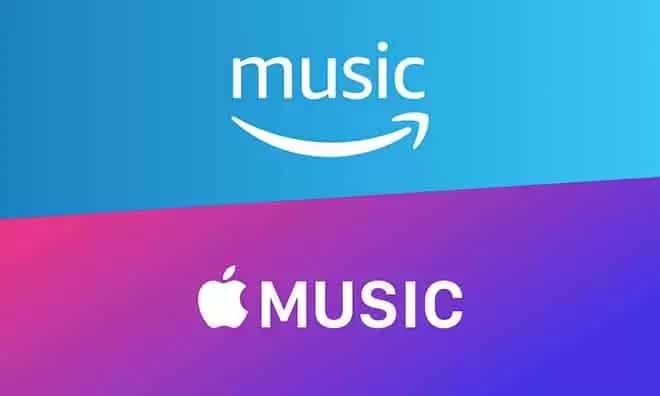The music streaming war is heating up. Every large company, including Amazon, Apple, and Google, has its own method of capturing the growing streaming market. Apple has included Apple Music as the default option on all iPhones. Google is pushing YouTube Music with the YouTube Premium combo, and Amazon has integrated its music service with Prime membership.
In terms of natural reach to customers, both Apple and Amazon enjoy a huge advantage over their competitors. Apple is in seventh heaven with all-time high software and service revenues, while Amazon Prime Music has surpassed 55 million members. In this post, we will compare Amazon Music with Apple Music. The comparison will be based on the UI, Discover menu, custom features, music listening experience, price, and more. Let’s begin.
Cross-platform availability
Amazon Music is available everywhere. We’re talking about mobile platforms, Windows, Mac, web, Echo smart speakers, and Fire TV. Apple Music is accessible on Android, iOS, Mac, Apple Watch, and its HomePod smart speaker.
User interface
This is important. If a user doesn’t find what they’re looking for, it can be irritating and could lead to a switch to a rival service.
Amazon sticks to the tried and tested dark blue theme. The app uses the standard bottom navigation bar to switch between menus.
The Settings menu is at the top, which is unpleasantly odd. The three-dot menu in the UI uses a transparent theme which looks good to me.
Apple Music is simple with iOS guidelines. It uses a white theme by default and supports dark mode in iOS 13.
All major options like Library, Browser, Search, etc. I’m at the bottom.
As is the case with every Apple app, the settings menu is not accessible from the app itself. You need to go to your device Settings to make the changes.
Discover new songs
On Amazon Music, you must first set your Music preferences from the Settings menu. Based on that, the app will customize the home screen for you.
The banner above shows the brand new albums for the chosen languages. Below, you will find the custom playlist created by moderators, trending ones, and playlists based on the occasion.
While playing a song, users can tap the three-dot menu and choose the “customer also listened” option to find new songs based on the listening habits of others.
Apple Music promptly asks you to choose music interests on startup. Now, from the app, go to the “For you” section and it will suggest playlists, songs, and new music based on your interests.
The Browser menu lets you discover new songs and albums based on languages. It’s a vertical mix of banners, playlists, and songs in one menu.
Apple also shows Beats 1 interviews and provides an overview of upcoming albums at the bottom. Radio integration is also available if you enjoy listening to online radio on the go.
Music player and listening experience
Regardless of how many songs a service offers, if the listening experience isn’t up to par, it could lead users to uninstall.
Starting with Amazon Music, the default player uses an attractive-looking transparent user interface with all the major options below. You can add a song in a seamless loop, use Alexa to play a song, and even stream the playing music to Amazon-branded smart speakers and Fire TV.
I tried the app with Mi Bluetooth speaker and Funcl wireless earphones. It worked perfectly. There were no delays and the overall quality remained at the highest level. Unfortunately, there is no built-in equalizer support.
Recently, the company launched Amazon Music HD, a lossless music service with the highest level of quality. So far it is limited to a handful of countries.
Apple Music opts for a fairly simple player user interface with minimal features at the bottom. Due to the closed nature of the Apple ecosystem, the cast functionality only works with Apple devices such as Apple TV and HomePod speakers.
Tap the three-dot menu and the scrollable section lets you like a song, suggest fewer songs like that, and other custom options.
Apple Music offers EQ support, but it’s not available in the app. You need to go to Settings> Apple Music> Playback> EQ and select the relevant setting.
The listening experience is top-notch like Amazon Music.
Features
Amazon Music has integrated the Alexa voice assistant into the app. You can simply ask her to play any song for you.
Other features include a sleep timer to turn off the service after the set time, an offline recommendation to automatically download songs, music downloads, volume normalization to keep a balance between all songs, and more.
Apple Music, being an integrated service, takes advantage of other Apple services. It supports Siri shortcuts, has radio integration, automatic downloads, the ability to set volume limits, and more.
Price
Amazon Music is part of the Amazon Prime subscription. For $99/year, you get one year of Prime Video membership, free shipping, and access to Amazon Music.
Apple Music is free for the first three months. After that, it costs $10/month for a personal plan and $15/month for the family plan, which allows you to add up to five people in the group.
Conclusion
As you can see from the comparison above, both apps have their strengths above each other. Apple Music shines with Siri integration, the UI is more beautiful, and the pricing is flexible too. Amazon reacts with Alexa integration and broad ecosystem support.

